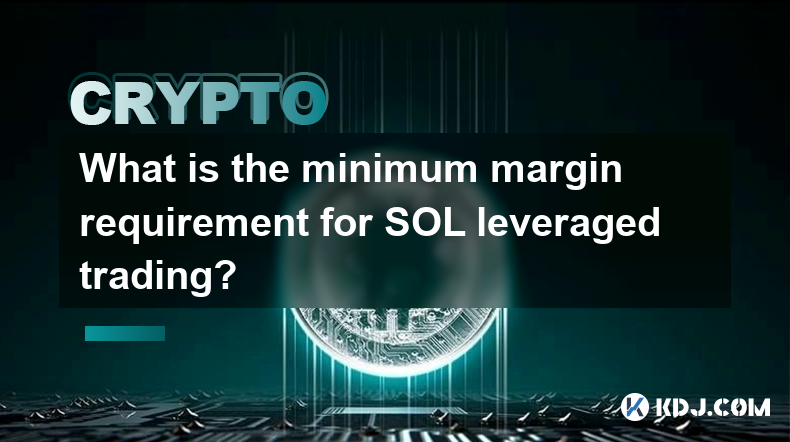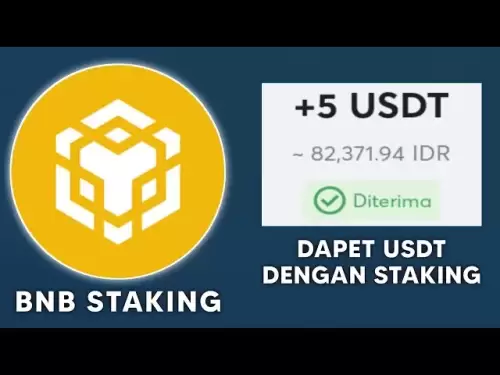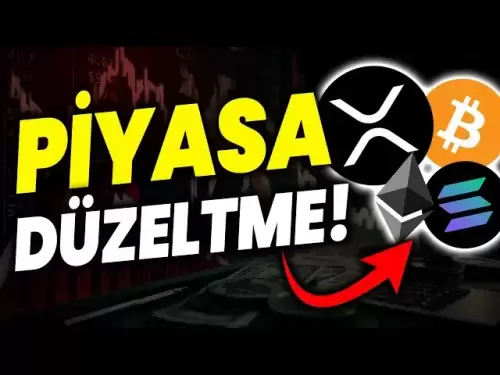-
 Bitcoin
Bitcoin $105,290.4279
4.46% -
 Ethereum
Ethereum $2,407.4233
7.73% -
 Tether USDt
Tether USDt $1.0007
0.02% -
 XRP
XRP $2.1509
6.51% -
 BNB
BNB $640.4754
3.91% -
 Solana
Solana $143.8519
8.64% -
 USDC
USDC $0.9999
0.01% -
 TRON
TRON $0.2735
3.64% -
 Dogecoin
Dogecoin $0.1631
7.35% -
 Cardano
Cardano $0.5811
7.21% -
 Hyperliquid
Hyperliquid $37.4173
5.54% -
 Sui
Sui $2.7951
13.59% -
 Bitcoin Cash
Bitcoin Cash $462.0755
1.75% -
 Chainlink
Chainlink $12.8780
10.17% -
 UNUS SED LEO
UNUS SED LEO $9.1321
1.18% -
 Stellar
Stellar $0.2454
7.05% -
 Avalanche
Avalanche $18.0314
8.62% -
 Toncoin
Toncoin $2.9114
6.55% -
 Shiba Inu
Shiba Inu $0.0...01158
9.05% -
 Litecoin
Litecoin $85.0039
5.42% -
 Hedera
Hedera $0.1519
12.92% -
 Monero
Monero $312.0572
4.18% -
 Ethena USDe
Ethena USDe $1.0007
0.03% -
 Polkadot
Polkadot $3.4168
8.50% -
 Dai
Dai $1.0000
0.00% -
 Bitget Token
Bitget Token $4.1980
4.14% -
 Uniswap
Uniswap $6.8088
8.09% -
 Pepe
Pepe $0.0...09871
10.93% -
 Pi
Pi $0.5340
3.78% -
 Aave
Aave $255.3245
11.87%
What is the minimum margin requirement for SOL leveraged trading?
Solana (SOL) leveraged trading minimum margin requirements vary widely across exchanges, depending on leverage, volatility, and exchange policies. Always confirm requirements before trading to avoid margin calls and potential liquidation.
Mar 23, 2025 at 08:15 am

Key Points:
- Minimum margin requirements for SOL leveraged trading vary significantly across exchanges.
- They are not fixed and depend on several factors including leverage level, the exchange's risk assessment, and market volatility.
- Understanding margin calls and liquidation is crucial to avoid losses.
- Different exchanges offer different levels of leverage, impacting the margin requirement.
- Always check the specific requirements of your chosen exchange before initiating a leveraged trade.
What is the minimum margin requirement for SOL leveraged trading? The answer isn't a single number. The minimum margin requirement for leveraged trading of Solana (SOL) isn't standardized across all cryptocurrency exchanges. It's a dynamic figure influenced by several interconnected factors. Understanding these factors is key to responsible leveraged trading and mitigating potential losses.
Factors Affecting Minimum Margin Requirements:
- Leverage Level: The higher the leverage you choose (e.g., 2x, 5x, 10x, or even higher), the lower the percentage of the trade value you need to put up as margin initially. However, this also dramatically increases your risk. A small price movement against your position can quickly lead to a margin call.
- Exchange Policies: Each exchange has its own risk management system and internal policies dictating minimum margin requirements. These policies are designed to protect the exchange from losses stemming from extreme market volatility or large-scale liquidations. They may adjust these requirements based on market conditions.
- Market Volatility: During periods of high volatility in the SOL market, exchanges often increase their minimum margin requirements. This is a preventative measure to reduce the risk of traders being liquidated due to sudden, sharp price swings. Conversely, during calmer periods, requirements might be slightly lower.
- SOL Price: While not directly impacting the percentage requirement, the SOL price itself influences the absolute amount of margin needed. A higher SOL price means a higher margin requirement in absolute terms, even if the percentage remains the same.
How Margin Trading Works with SOL:
Leveraged trading, in essence, allows you to control a larger position in SOL than you could with your available funds. You borrow funds from the exchange to amplify your potential profits. However, this also amplifies your potential losses.
The margin requirement is the percentage of the trade value you must deposit as collateral. If the market moves against your position and your margin falls below the minimum requirement, you receive a margin call.
Margin Calls and Liquidation:
- Margin Call: A margin call is a warning from the exchange that your margin is insufficient. You need to deposit more funds to meet the minimum requirement. Failure to do so results in liquidation.
- Liquidation: Liquidation is the forced closure of your position by the exchange. The exchange sells your SOL to recover the borrowed funds, often resulting in significant losses as the sale happens at an unfavorable price. Liquidation happens automatically when your margin falls below a certain threshold, typically set by the exchange.
Finding Minimum Margin Requirements:
Unfortunately, there isn't a single, centralized source listing the minimum margin requirements for SOL across all exchanges. You must check each exchange individually.
- Exchange Websites: Most reputable exchanges clearly outline their margin trading terms and conditions, including minimum margin requirements for different leverage levels and assets, including SOL. Look for sections on "Margin Trading," "Leveraged Trading," or "Risk Disclosure."
- Contacting Support: If you can't find the information on the website, contacting the exchange's customer support is a reliable way to obtain this crucial information.
Step-by-Step Guide (Illustrative Example):
Let's imagine you want to use 5x leverage to trade SOL on a hypothetical exchange.
- Choose an Exchange: Select a reputable exchange that offers SOL leveraged trading.
- Check Minimum Margin Requirements: Carefully review the exchange's margin trading terms and conditions. Let's assume the minimum margin requirement for 5x leverage on SOL is 20%.
- Determine Trade Size: Decide how much SOL you want to trade.
- Calculate Margin: Multiply your trade size by the minimum margin requirement (20%). This is the amount of SOL you need to deposit as margin.
- Open Trade: Once you've met the margin requirement, you can place your leveraged trade.
Common Questions:
Q: Can I change my leverage level after opening a position? A: Most exchanges allow you to adjust your leverage, but this depends on the exchange's specific policies. Changing leverage can affect your margin requirement.
Q: What happens if the price moves significantly against my position? A: If the price moves against your position and your margin falls below the minimum requirement, you'll receive a margin call. Failure to add more margin will result in liquidation.
Q: Are there fees associated with leveraged trading? A: Yes, exchanges typically charge fees for leveraged trading, including funding fees (interest on borrowed funds) and potentially higher trading fees.
Q: Is leveraged trading risky? A: Yes, leveraged trading significantly amplifies both potential profits and losses. It's crucial to understand the risks involved and only trade with funds you can afford to lose. It's not suitable for inexperienced traders.
Q: How can I reduce my risk in leveraged SOL trading? A: Use lower leverage, implement stop-loss orders to limit potential losses, and thoroughly research the market before placing any trades. Only trade with funds you can afford to lose.
Disclaimer:info@kdj.com
The information provided is not trading advice. kdj.com does not assume any responsibility for any investments made based on the information provided in this article. Cryptocurrencies are highly volatile and it is highly recommended that you invest with caution after thorough research!
If you believe that the content used on this website infringes your copyright, please contact us immediately (info@kdj.com) and we will delete it promptly.
- Circle's Stablecoin Soars: A $62 Billion Power Play
- 2025-06-24 06:25:12
- Ruvi AI: Is It Really Poised to Eclipse Tron and Other Crypto Giants?
- 2025-06-24 07:05:12
- Neo Pepe Coin: The Meme Token Taking Over Crypto Presales
- 2025-06-24 06:45:12
- Solana, Pepe, and Crypto Risk: Navigating the Meme Coin Mania
- 2025-06-24 07:05:12
- COIN Act: Curbing Crypto Profiteering by Public Officials – A Necessary Step?
- 2025-06-24 06:25:12
- Ethereum Whales Accumulate: Smart Money Betting on ETH Rebound?
- 2025-06-24 07:25:16
Related knowledge

How to customize USDT TRC20 mining fees? Flexible adjustment tutorial
Jun 13,2025 at 01:42am
Understanding USDT TRC20 Mining FeesMining fees on the TRON (TRC20) network are essential for processing transactions. Unlike Bitcoin or Ethereum, where miners directly validate transactions, TRON uses a delegated proof-of-stake (DPoS) mechanism. However, users still need to pay bandwidth and energy fees, which are collectively referred to as 'mining fe...

USDT TRC20 transaction is stuck? Solution summary
Jun 14,2025 at 11:15pm
Understanding USDT TRC20 TransactionsWhen users mention that a USDT TRC20 transaction is stuck, they typically refer to a situation where the transfer of Tether (USDT) on the TRON blockchain has not been confirmed for an extended period. This issue may arise due to various reasons such as network congestion, insufficient transaction fees, or wallet-rela...

How to cancel USDT TRC20 unconfirmed transactions? Operation guide
Jun 13,2025 at 11:01pm
Understanding USDT TRC20 Unconfirmed TransactionsWhen dealing with USDT TRC20 transactions, it’s crucial to understand what an unconfirmed transaction means. An unconfirmed transaction is one that has been broadcasted to the blockchain network but hasn’t yet been included in a block. This typically occurs due to low transaction fees or network congestio...

How to check USDT TRC20 balance? Introduction to multiple query methods
Jun 21,2025 at 02:42am
Understanding USDT TRC20 and Its ImportanceUSDT (Tether) is one of the most widely used stablecoins in the cryptocurrency market. It exists on multiple blockchain networks, including TRC20, which operates on the Tron (TRX) network. Checking your USDT TRC20 balance accurately is crucial for users who hold or transact with this asset. Whether you're sendi...

What to do if USDT TRC20 transfers are congested? Speed up trading skills
Jun 13,2025 at 09:56am
Understanding USDT TRC20 Transfer CongestionWhen transferring USDT TRC20, users may occasionally experience delays or congestion. This typically occurs due to network overload on the TRON blockchain, which hosts the TRC20 version of Tether. Unlike the ERC20 variant (which runs on Ethereum), TRC20 transactions are generally faster and cheaper, but during...

The relationship between USDT TRC20 and TRON chain: technical background analysis
Jun 12,2025 at 01:28pm
What is USDT TRC20?USDT TRC20 refers to the Tether (USDT) token issued on the TRON blockchain using the TRC-20 standard. Unlike the more commonly known ERC-20 version of USDT (which runs on Ethereum), the TRC-20 variant leverages the TRON network's infrastructure for faster and cheaper transactions. The emergence of this version came as part of Tether’s...

How to customize USDT TRC20 mining fees? Flexible adjustment tutorial
Jun 13,2025 at 01:42am
Understanding USDT TRC20 Mining FeesMining fees on the TRON (TRC20) network are essential for processing transactions. Unlike Bitcoin or Ethereum, where miners directly validate transactions, TRON uses a delegated proof-of-stake (DPoS) mechanism. However, users still need to pay bandwidth and energy fees, which are collectively referred to as 'mining fe...

USDT TRC20 transaction is stuck? Solution summary
Jun 14,2025 at 11:15pm
Understanding USDT TRC20 TransactionsWhen users mention that a USDT TRC20 transaction is stuck, they typically refer to a situation where the transfer of Tether (USDT) on the TRON blockchain has not been confirmed for an extended period. This issue may arise due to various reasons such as network congestion, insufficient transaction fees, or wallet-rela...

How to cancel USDT TRC20 unconfirmed transactions? Operation guide
Jun 13,2025 at 11:01pm
Understanding USDT TRC20 Unconfirmed TransactionsWhen dealing with USDT TRC20 transactions, it’s crucial to understand what an unconfirmed transaction means. An unconfirmed transaction is one that has been broadcasted to the blockchain network but hasn’t yet been included in a block. This typically occurs due to low transaction fees or network congestio...

How to check USDT TRC20 balance? Introduction to multiple query methods
Jun 21,2025 at 02:42am
Understanding USDT TRC20 and Its ImportanceUSDT (Tether) is one of the most widely used stablecoins in the cryptocurrency market. It exists on multiple blockchain networks, including TRC20, which operates on the Tron (TRX) network. Checking your USDT TRC20 balance accurately is crucial for users who hold or transact with this asset. Whether you're sendi...

What to do if USDT TRC20 transfers are congested? Speed up trading skills
Jun 13,2025 at 09:56am
Understanding USDT TRC20 Transfer CongestionWhen transferring USDT TRC20, users may occasionally experience delays or congestion. This typically occurs due to network overload on the TRON blockchain, which hosts the TRC20 version of Tether. Unlike the ERC20 variant (which runs on Ethereum), TRC20 transactions are generally faster and cheaper, but during...

The relationship between USDT TRC20 and TRON chain: technical background analysis
Jun 12,2025 at 01:28pm
What is USDT TRC20?USDT TRC20 refers to the Tether (USDT) token issued on the TRON blockchain using the TRC-20 standard. Unlike the more commonly known ERC-20 version of USDT (which runs on Ethereum), the TRC-20 variant leverages the TRON network's infrastructure for faster and cheaper transactions. The emergence of this version came as part of Tether’s...
See all articles
























































































